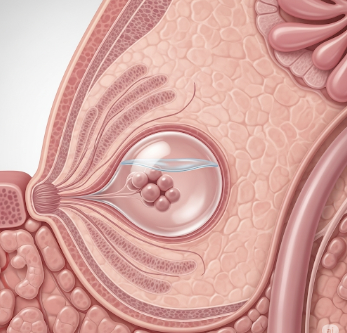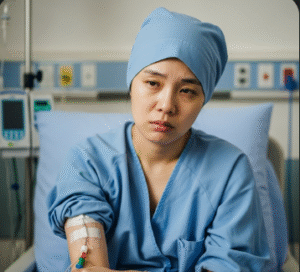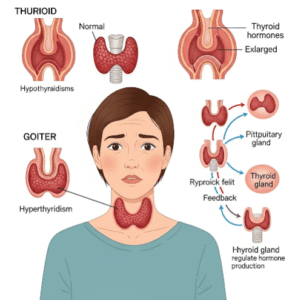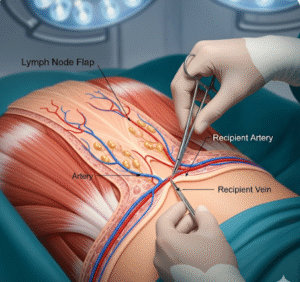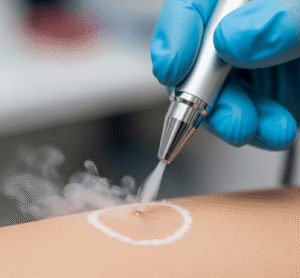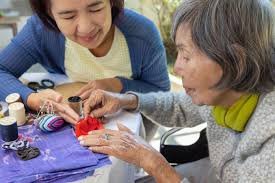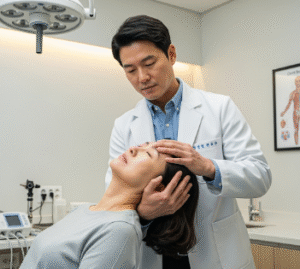Overview
A breast cyst is a fluid-filled sac within the breast tissue, which is usually benign and non-cancerous. Breast cysts are common, especially in women aged 35–50, and may fluctuate in size due to hormonal changes. They can appear as palpable lumps or be discovered incidentally during routine imaging.
In Korea, breast cysts are evaluated and managed in breast clinics and specialized hospitals using ultrasound, mammography, and, if needed, minimally invasive aspiration. Korean healthcare emphasizes accurate diagnosis, patient reassurance, and minimally invasive treatment when necessary.
What is a Breast Cyst?
A breast cyst is a round or oval sac filled with fluid located within the breast. It can be:
- Simple cyst: Smooth, thin-walled, and usually harmless
- Complex cyst: Contains solid components or septations, requiring closer monitoring
- Multiple cysts: Clustered together in one or both breasts
Breast cysts are hormone-sensitive, often enlarging during the menstrual cycle and shrinking afterward. They are usually benign but may require evaluation to rule out malignancy in complex cases.
Symptoms
Many breast cysts are asymptomatic and detected during routine examinations. Symptomatic cysts may present as:
- Palpable lump that is round, smooth, and movable
- Breast tenderness or pain, particularly before menstruation
- Changes in lump size over the menstrual cycle
- Occasional nipple discharge from cysts close to ducts
- Feeling of fullness or swelling in the breast
Complex cysts may mimic malignant lumps, requiring further investigation.
Causes
The exact cause of breast cysts is not fully understood, but they are often linked to:
- Hormonal fluctuations, especially estrogen levels
- Blocked breast ducts causing fluid accumulation
- Fibrocystic breast changes, common in premenopausal women
- Aging of breast tissue leading to cyst formation
- Previous breast trauma or infection (less common)
Risk Factors
- Age: Most common in women aged 35–50
- Hormonal changes: Pregnancy, menstrual cycle, or menopause transition
- Family history: Fibrocystic breast disease
- Hormone therapy or oral contraceptives
- Previous breast cysts or benign breast conditions
Complications
Breast cysts are generally benign and self-limiting, but some complications can occur:
- Pain or discomfort, especially in large cysts
- Infection or abscess formation in rare cases
- Recurrence after aspiration
- Psychological anxiety due to fear of breast cancer
- Difficulty distinguishing from malignant lumps, requiring careful evaluation
Prevention
While breast cysts cannot always be prevented, risk reduction includes:
- Regular breast self-examination for early detection
- Routine screening with mammography or ultrasound
- Hormonal management when advised by a healthcare professional
- Maintaining healthy lifestyle habits: balanced diet, regular exercise, and avoiding smoking
- Monitoring changes in breast tissue, especially during menstrual cycles
Treatment Options in Korea
Diagnosis
Accurate diagnosis differentiates benign cysts from malignant lesions:
- Ultrasound: Primary tool for detecting fluid-filled cysts
- Mammography: Assesses for other suspicious areas
- Fine-needle aspiration: Confirms cyst content and relieves symptoms
- Core biopsy: Recommended for complex or suspicious cysts
Medical Management
- Observation: Most simple cysts do not require treatment and are monitored regularly
- Pain management: Over-the-counter analgesics for discomfort
- Hormonal therapy: Occasionally prescribed to reduce cyst recurrence in selected patients
Minimally Invasive Procedures
- Aspiration: Ultrasound-guided needle drainage for large or painful cysts
- Sclerotherapy: Rarely, a sclerosing agent is injected to prevent recurrence of recurrent cysts
Supportive Care
- Breast self-monitoring to track changes
- Routine follow-up imaging to ensure cyst resolution or monitor recurrence
- Patient education on distinguishing cysts from potentially malignant lumps
- Psychological support for anxiety or breast health concerns
Prognosis
The prognosis for breast cysts is excellent, with most cysts being benign and non-cancerous:
- Simple cysts rarely require intervention and may resolve on their own
- Aspiration provides relief for painful cysts with minimal recurrence
- Complex cysts require closer follow-up but are often treatable without long-term complications
- Early evaluation and monitoring in Korea’s specialized breast clinics ensure patient reassurance, accurate diagnosis, and prevention of unnecessary procedures
- Regular follow-up allows timely management if cysts recur or change in character
Korean healthcare centers provide comprehensive, minimally invasive care for breast cysts, including diagnostic imaging, needle aspiration, follow-up, and patient education, ensuring optimal outcomes and patient confidence in breast health.

